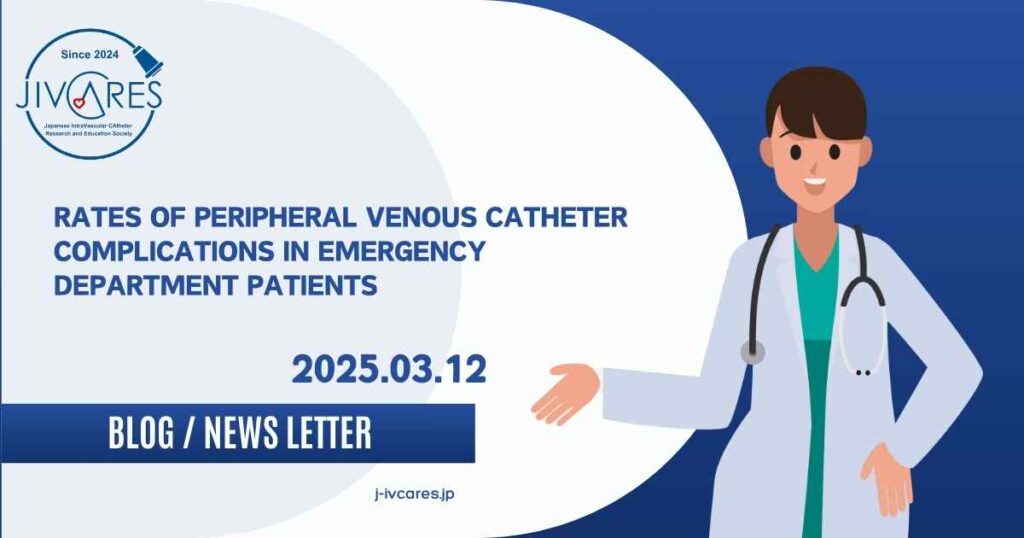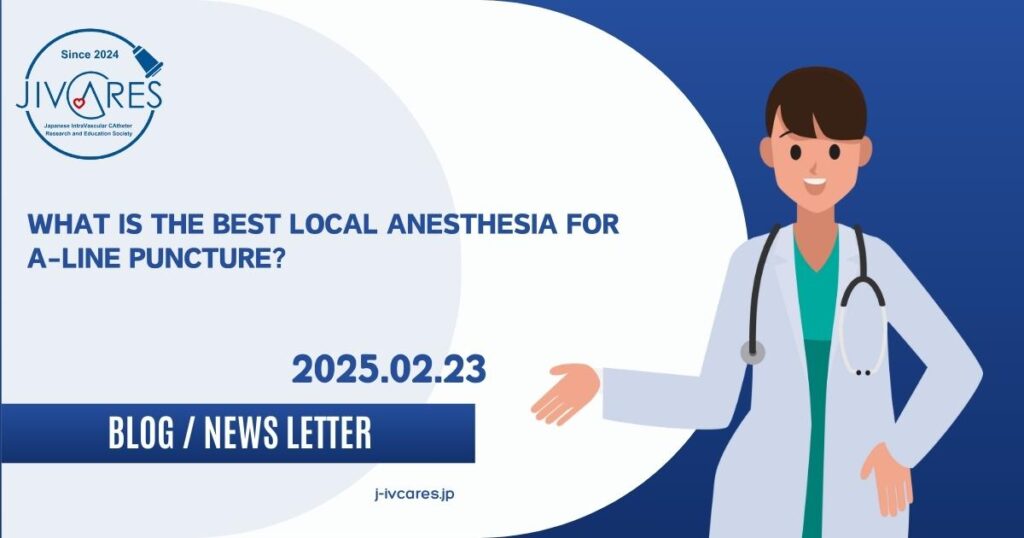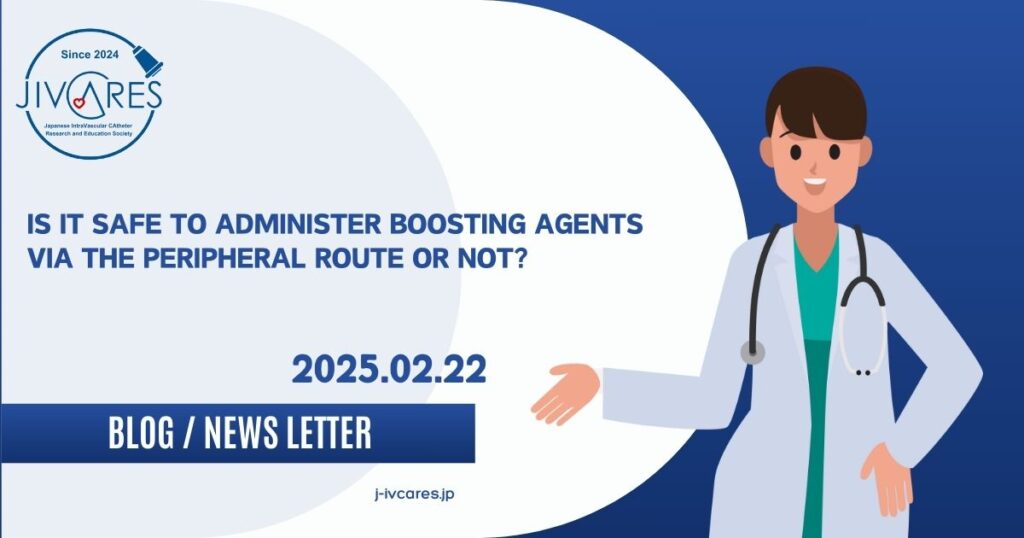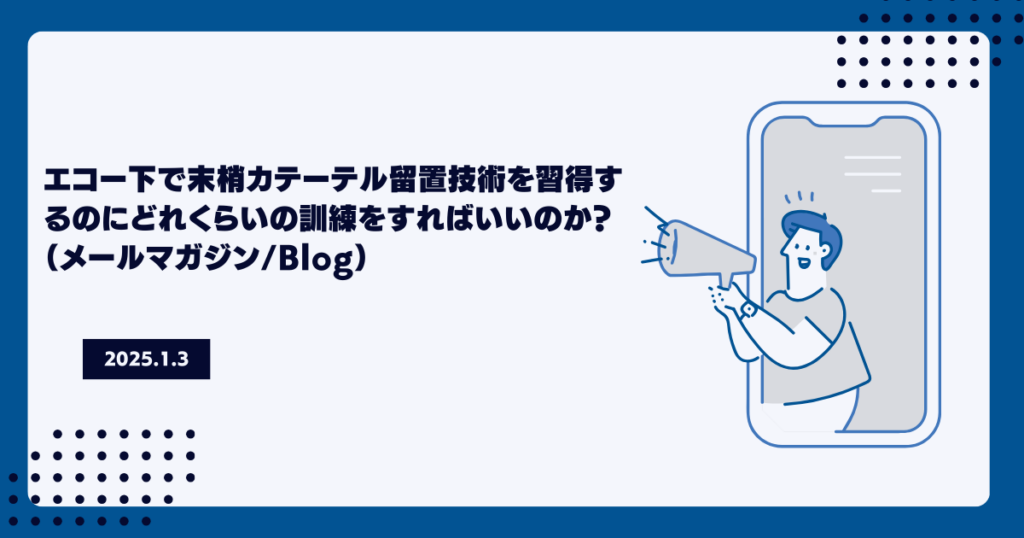blog/newsletter- category -
-

The role of hospital Vascular Access Teams (VATs) and their impact on patient safety: a multi-method study
Presented here is a multi-method (qualitative and quantitative) study of the structure and function of Vascular Access Teams (VATs) and their impact on patient safety, conducted at multiple hospitals in Michigan, USA. In examining the reality and potential of nurse-led venous access teams... -

Cost-effectiveness of a vascular access education and training program for emergency room inpatients
With the start of a new school year and new colleagues, am I the only one who somehow remembers that day when the new students arrived? In this issue, we present a report on the educational costs of echocardiographic venipuncture. If you would like to read the rest of this article, please subscribe to our mailing list or read the note... -

Rates of peripheral venous catheter complications in emergency department patients: also patient factors
Most emergency room visits are for patients who are not seen regularly or admitted to the hospital on a scheduled basis. In addition, patients are admitted to the hospital in life-threatening situations, and peripheral venous catheters are routinely inserted. Today, we will discuss the rate of peripheral venous catheter complications in patients presenting to the emergency department and the... -

What is the best local anesthesia for A-line puncture?
Today we present the results of a systematic review and network meta-analysis of analgesia during radial artery puncture. If you would like to read further, please join our mailing list or read the NOTE. Click here to subscribe to our mailing list -

Is it safe to administer boosting agents via the peripheral route: a systematic review and meta-analysis
It has been recommended that boosting agents be administered through a central vein in both adults and children due to concerns about extravascular leakage and local tissue ischemia. However, in a time-sensitive condition such as septic shock, the time required to insert a central venous catheter can delay the initiation of boosting agents. Therefore, boosting... -

Enoxaparin (low molecular weight heparin) prevents catheter-related venous thrombosis after infant cardiac surgery
In this issue of 2022, we present a paper on prevention of catheter-related venous thrombosis after infant cardiac surgery. Central venous catheter (CVC)-related venous thrombosis after cardiac surgery in infants with congenital heart disease is considered a serious problem. Methods to prevent the risk of postoperative thrombosis are currently and... -

Midline Catheter and PICC
In Japan, midline catheters are gradually coming into use. The issue of how to differentiate the use of midline catheters from that of PICC catheters will become an issue for consideration in the future. In this article, we will discuss whether midline catheters or PICCs are better for outpatients receiving antimicrobial therapy. The research was conducted on... -

How much training does a nurse need to place a peripheral IV under echo?
Happy New Year! I look forward to working with you this year. I perform peripheral venous catheter placement using echo in my clinical practice. Sometimes I am asked (especially by management) how long does it take compared to the conventional method? -

Frequency and epidemiology of central catheter-related thrombosis: a prospective multicenter study (E-Newsletter/Blog)
While bloodstream infections are the most notable complication of central venous catheters, thrombosis in and around the catheter is another major complication. -

How to Manage A-Line in Acute Care Hospitals in Japan? (Mail Magazine/Blog No.9)
How are A-lines (arterial catheters) managed in your institution? Actually, there are not many studies that have investigated the current status of A-line management. In this study, we present the results of a survey on the current status of A-line management in acute care wards (ICUs and HCUs) in Japan.










